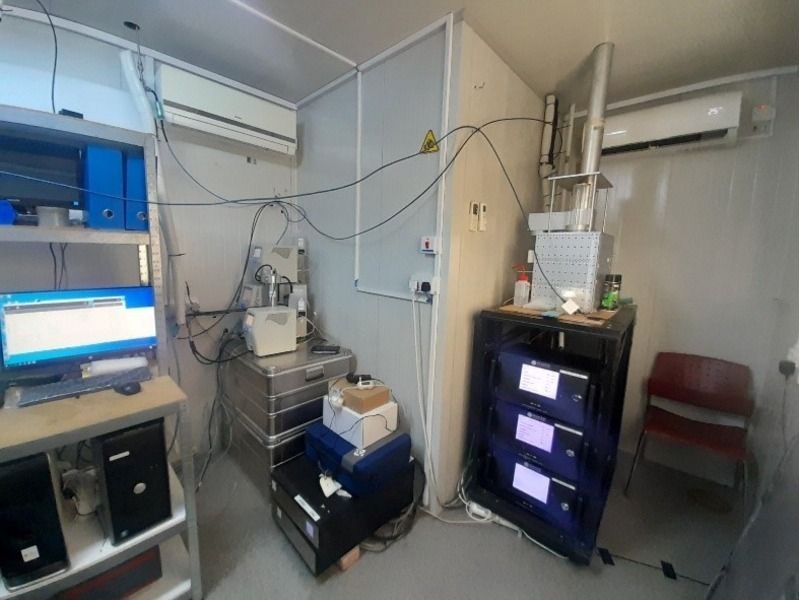
The Spring particles In Cyprus- SPICY campaign launched
The Environmental Observation Department (EOD) of CARE-C at the Cyprus Institute (CyI) has initiated the SPring particles In CYprus- SPICY campaign, which began in early April and will continue until the end of May at three of the four Cyprus Atmospheric Observatory (CAO) stations of CARE-C. This intensive campaign aims to investigate a phenomenon of formation of new particles in the springtime atmosphere in Cyprus. The campaign instrumentation fleet is spanning to measure everything from emissions to cloud condensation nuclei, with a focus on high-frequency new particle formation events.
The objectives of this campaign are to address several questions, that arise from a recent publication, involving a number of CARE-C research scientists, which identified that the frequency to form new particles in the atmosphere is “world record high” in Cyprus (Baalbaki et al., 2021). The reason for such high frequency, (>80% of the days in April), is yet unknown. Therefore, the SPICY campaign was established to investigate the composition and sources of aerosol-forming and growing precursor vapors, and whether the newly formed particles could serve as cloud condensation nuclei and have an effect in regional climate.
To address these questions, a variety of instruments have been installed, primarily at the Agia Marina Xyliatou (AMX) station of CAO, with complementary measurements taking place at the Troodos station and the Nicosia station, located at the CyI campus.
These instruments include trace gas instruments such as Picarro and gas analyzers, volatile organic compounds (VOCs) instruments such as PTR-ToF, and a plethora of aerosol instruments covering the spectrum from around 2nm to hundreds of nanometers. In other words, our instrumentation ranges from nanometer-sized condensation nuclei counters (nCNC), NAIS and Nano SMPS to optical particle counters (OPC) such as FIDAS200, all aimed at determining the occurrence of new particle formation (NPF) events and assessing whether the particles can serve as cloud condensation nuclei (CCNC).
Additionally, remote sensing instruments are operating at the CAO stations, such as a ceilometer and sunphotometers, as well as nephelometers and aethalometers for aerosol absorption and scattering. These instruments are employed to investigate whether the particles could contribute to cooling the local climate.
Reference:
Baalbaki, R., Pikridas, M., Jokinen, T., Laurila, T., Dada, L., Bezantakos, S., Ahonen, L., Neitola, K., Maisser, A., Bimenyimana, E., Christodoulou, A., Unga, F., Savvides, C., Lehtipalo, K., Kangasluoma, J., Biskos, G., Petäjä, T., Kerminen, V.-M., Sciare, J., and Kulmala, M.: Towards understanding the characteristics of new particle formation in the Eastern Mediterranean, Atmos. Chem. Phys., 21, 9223–9251, https://doi.org/10.5194/acp-21-9223-2021, 2021.
AMX station




Troodos station





